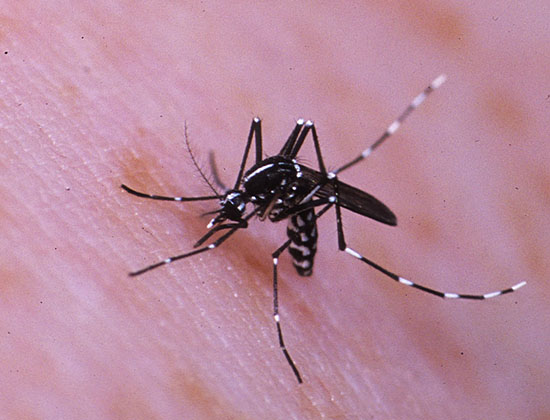Issue 1, April 11, 2016
Mosquitoes and Zika Virus
Zika virus has been in the news through the winter and several cases have been found in people in Illinois who apparently picked up the virus during foreign travel. This leads to concerns about the health of landscape workers and others this summer when mosquitoes become prevalent.
Zika virus can be transmitted between people in several ways, but of major concern is vectoring by mosquitoes. The main vector of Zika virus is the yellow fever mosquito, Aedes aegypti. This is a tropical to subtropical mosquito that does not survive our freezing Illinois winters. It could survive in Illinois during the summer if it was accidentally introduced but would die out during the winter.
Another known vector, Asian tiger mosquito, Aedes albopictus, does occur in Illinois. Asian tiger mosquito is apparently a less effective vector or transmitter of Zika virus. This mosquito does survive Illinois winters as eggs and is found sporadically in Illinois south of Interstate 80. It is also present in Cook County.

Aedes albopictus adult on skin.
Both mosquitoes lay their eggs on damp surfaces above standing water containing decaying organic matter, develop as larvae and pupae in water, and bite during the day, particularly in late afternoon. Neither flies very far, typically less than one-quarter mile. For this reason, residents can greatly reduce their likelihood of getting Zika virus by the neighborhood elimination of breeding sites.
Cleaning out gutters, replacing water in birdbaths and wading pools weekly, stocking minnows or other fish other than koi in ornamental ponds, and eliminating or drilling drainage holes in old tires, tin cans, abandoned cars, and ceramic pots will eliminate these mosquitoes' breeding sites. These mosquitoes can develop in as little as one cup of water. Repairing window screens keeps out adult mosquitoes.
Workers can protect themselves by applying mosquito repellents containing DEET, picaridin, or lemongrass oil. Mosquitoes bite through thin clothing so application to clothing may be needed as well as skin protection. The northern house mosquito, Culex pipiens pipiens, lives in similar locations, and the same practices help prevent transmission of West Nile Virus.
Most people who get Zika virus will have no symptoms. About 20% have mild symptoms including fever, achy joints, conjunctivitis (pink eye), and a skin rash. Symptoms typically occur 2 to 7 days following the bite from an infected mosquito. More severe symptoms may occur in some individuals including paralysis. Researchers are investigating the link between the Zika virus and birth defects including microcephaly, abnormally small heads in fetuses and babies that results in death or mental deficiencies.
Additional information can be obtained from the Zika Virus National Pest Alert published at the North Central IPM web site. Revisions of this pest alert are expected as additional information becomes available on this new threat. (Phil Nixon)
Author:
Phil Nixon